Abstract
The responding maintained by a reinforcer depends on the relation of the reinforcer not merely to the response that produces it but also to other preceding responses. Early responses in a sequence that ends in a reinforcing consequence make smaller contributions to later response rates than more recent ones, by virtue of the longer delays that separate them from the reinforcer. This study shows that the relation between a response and a later reinforcer contributes to responding only if no other reinforcers intervene; in other words, each reinforcer blocks responses that precede it from the effects of later reinforcers. Pigeons' pecks were maintained by fixed-interval (FI) schedules of food reinforcement. When FI 60-s (short) and FI 75-s (long) schedules began simultaneously within constant 150-s cycles, long FIs did not affect short-FI performances, but short FIs eliminated the first 60 s of long-FI performances. Removing either short-FI reinforcers or short-FI stimuli showed that short-FI reinforcers and not short-FI stimuli blocked the first 60 s of the long-FI performance from the retroactive effects of the long-FI reinforcer. With FI 15-s and FI 75-s schedules, the short-FI reinforcer was followed by reduced long-FI responding, but a schedule that prevented discrimination based on time since a reinforcer eliminated this proactive effect of the short-FI reinforcer. In other words, the retroactive effects were reinforcer effects whereas the proactive effects were discriminative effects. Quantitative descriptions of variable-interval performances, in which reinforcer effects may operate in the absence of temporal discriminative effects, can be derived from these relations.
Keywords: fixed-interval schedules, variable-interval rate function, reinforcer delay, inhibition by reinforcement, topographical tagging, discriminative control, matching law, key pecks, pigeons
Full text
PDF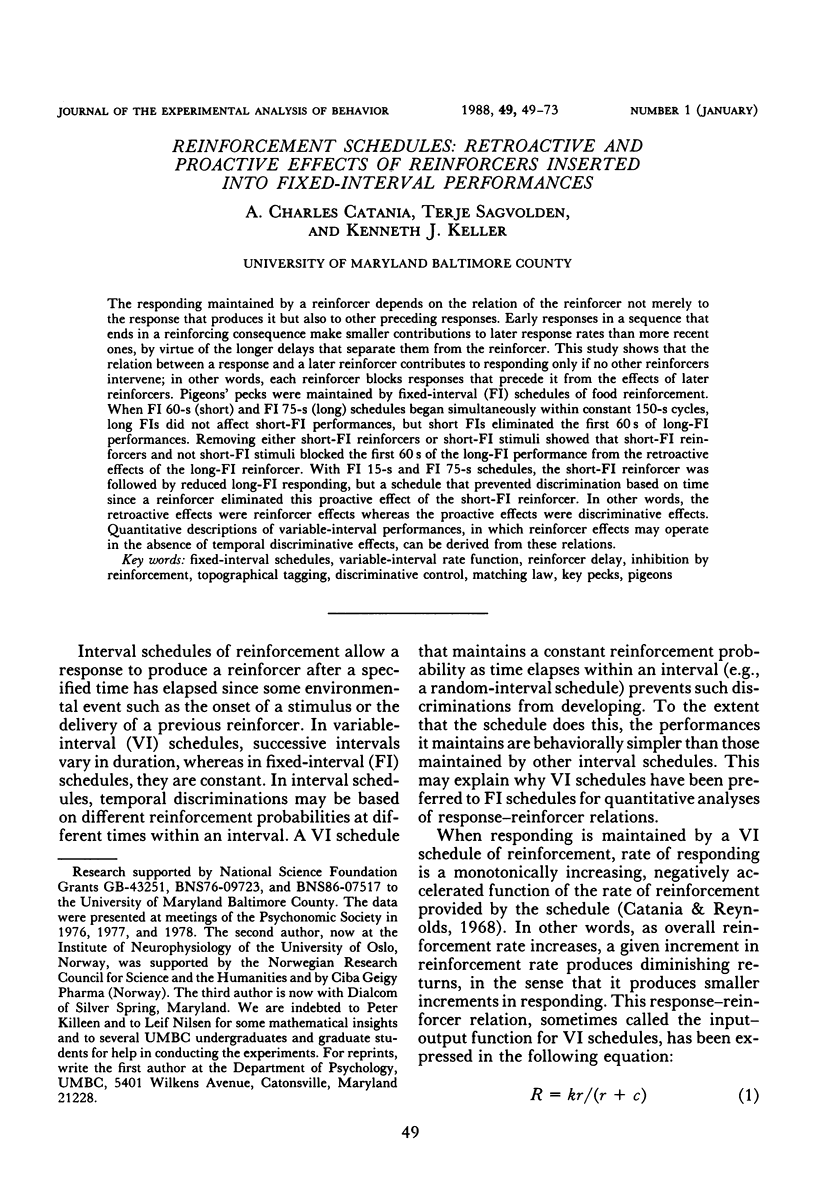
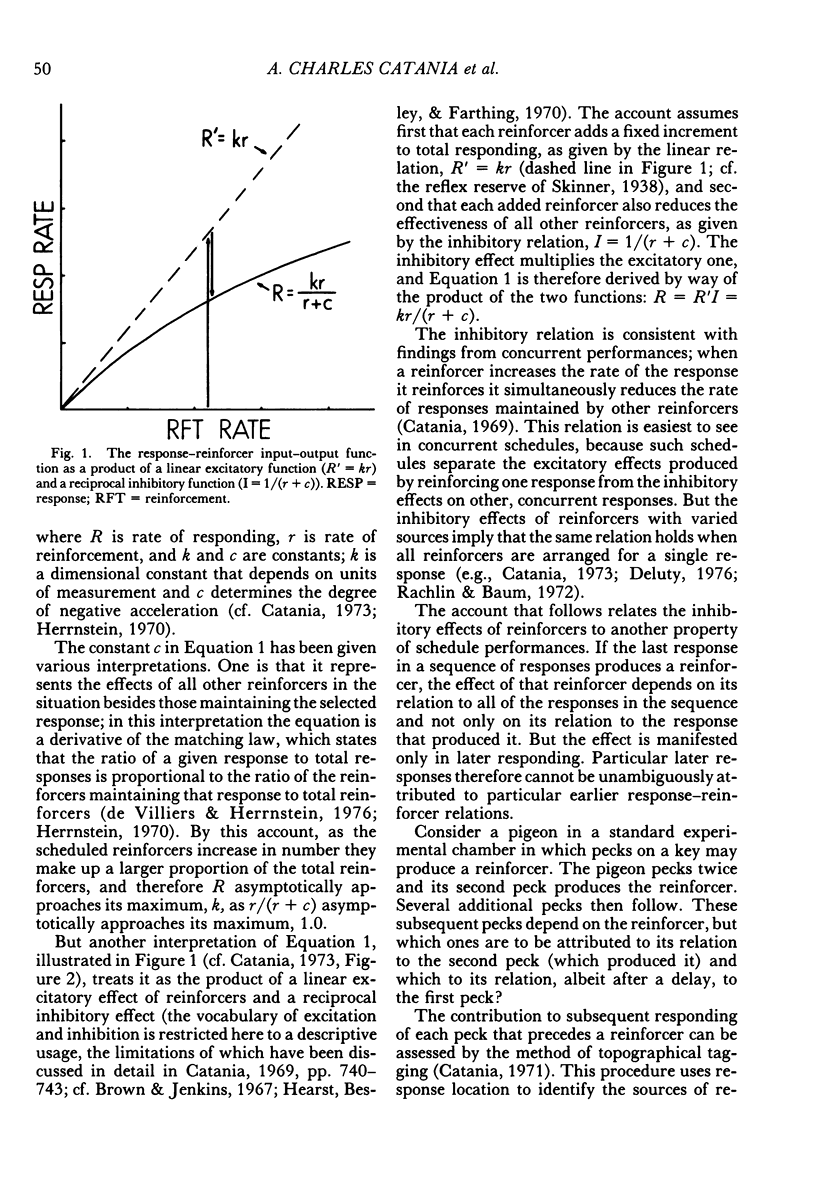
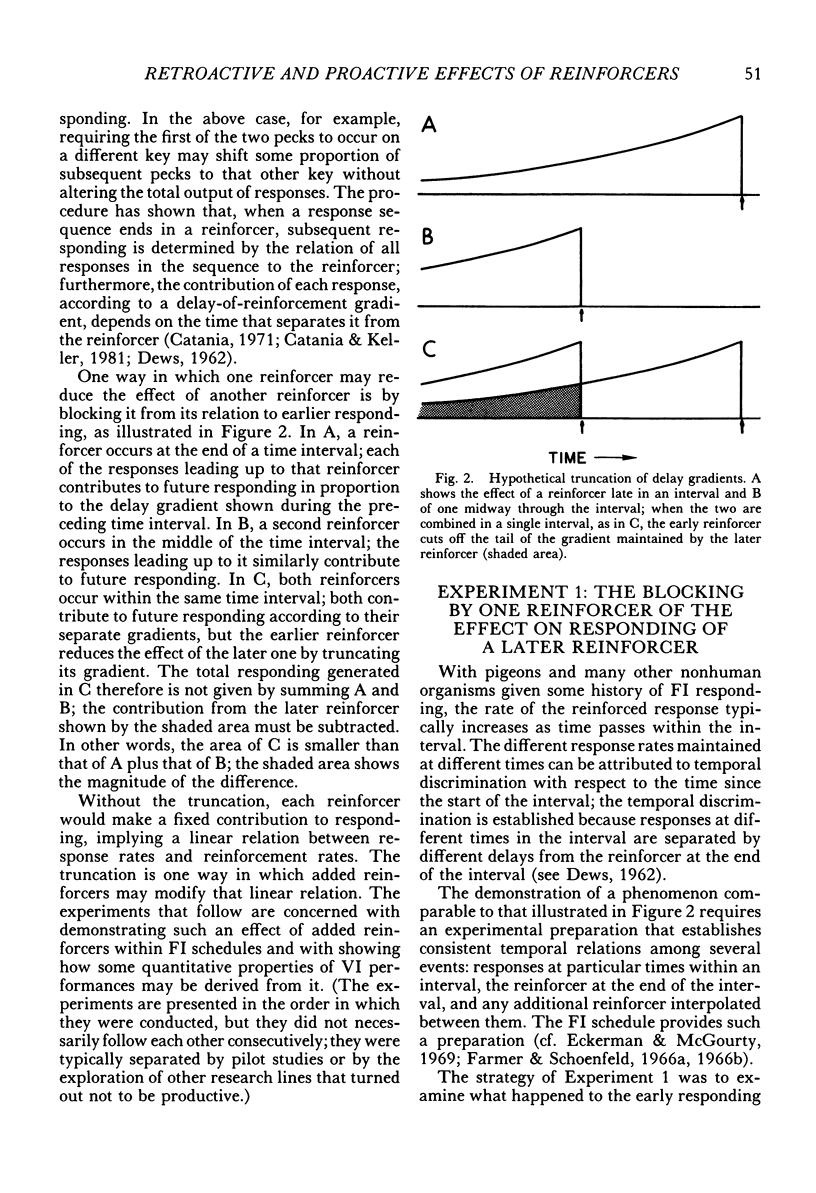
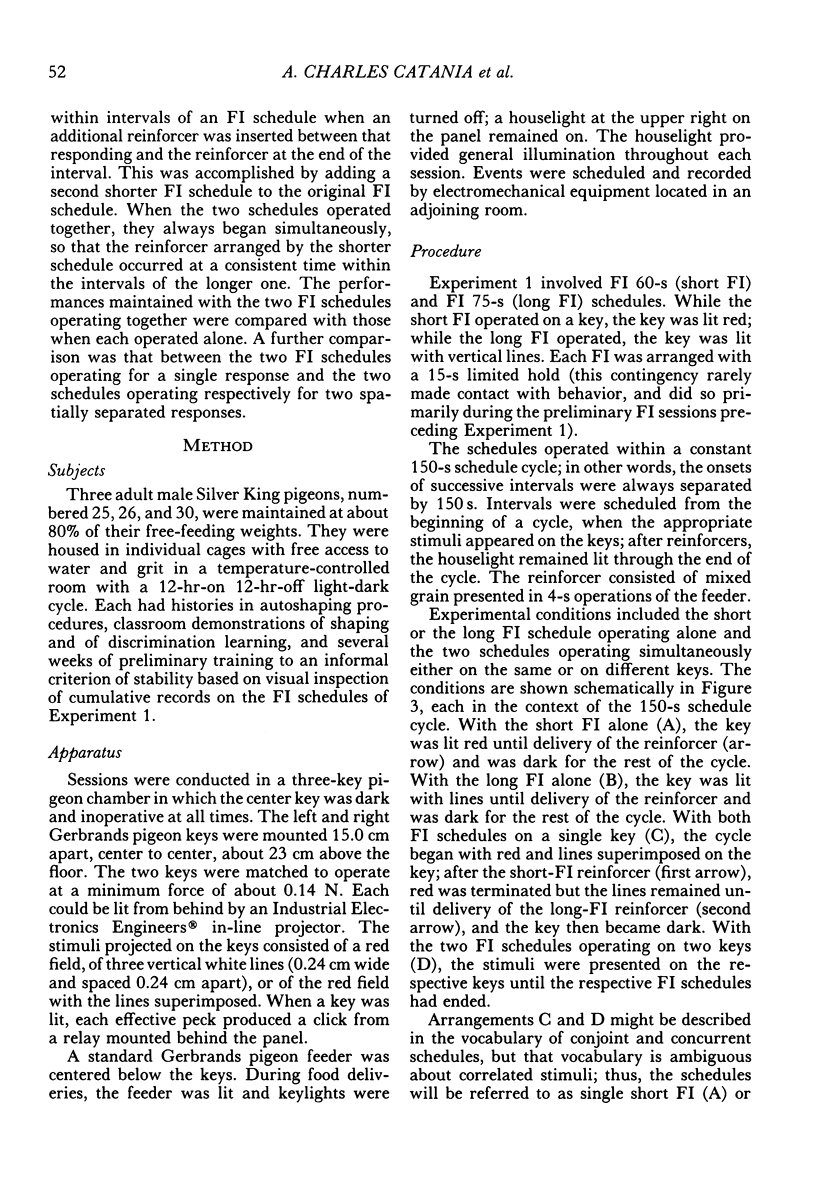
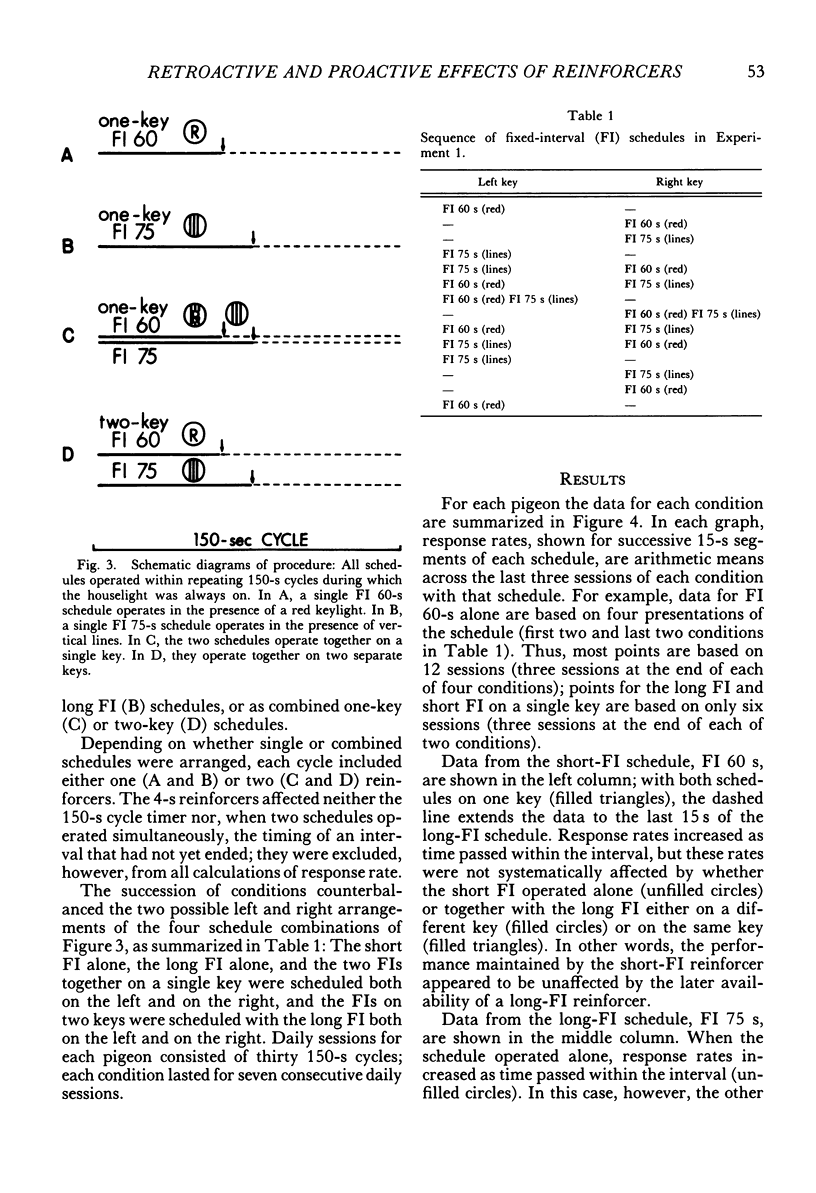
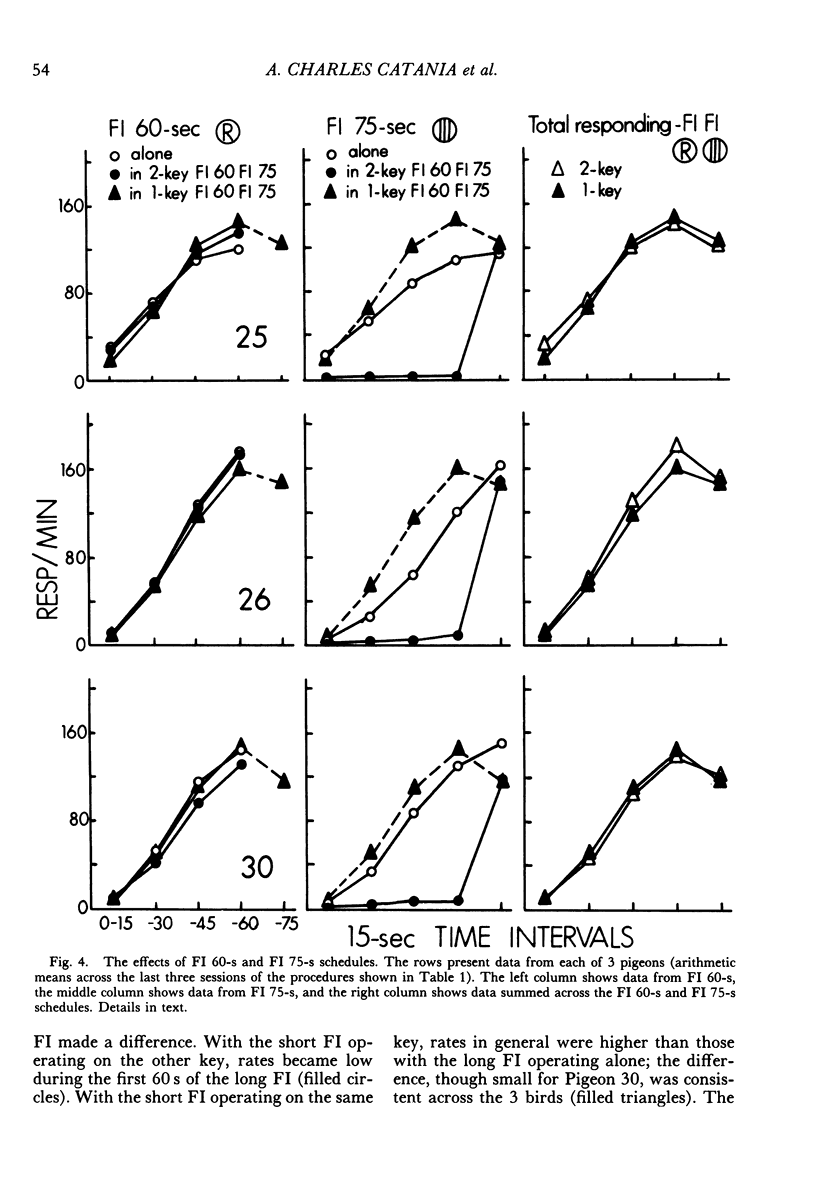
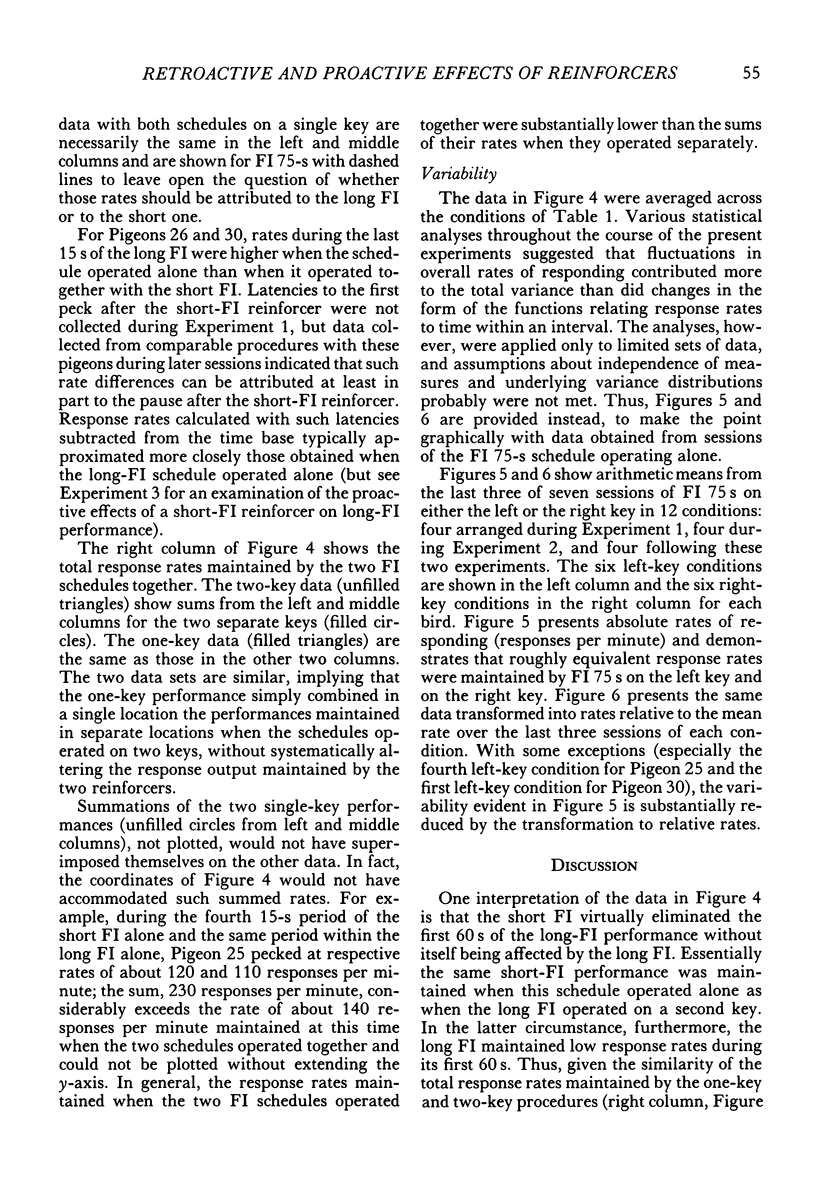
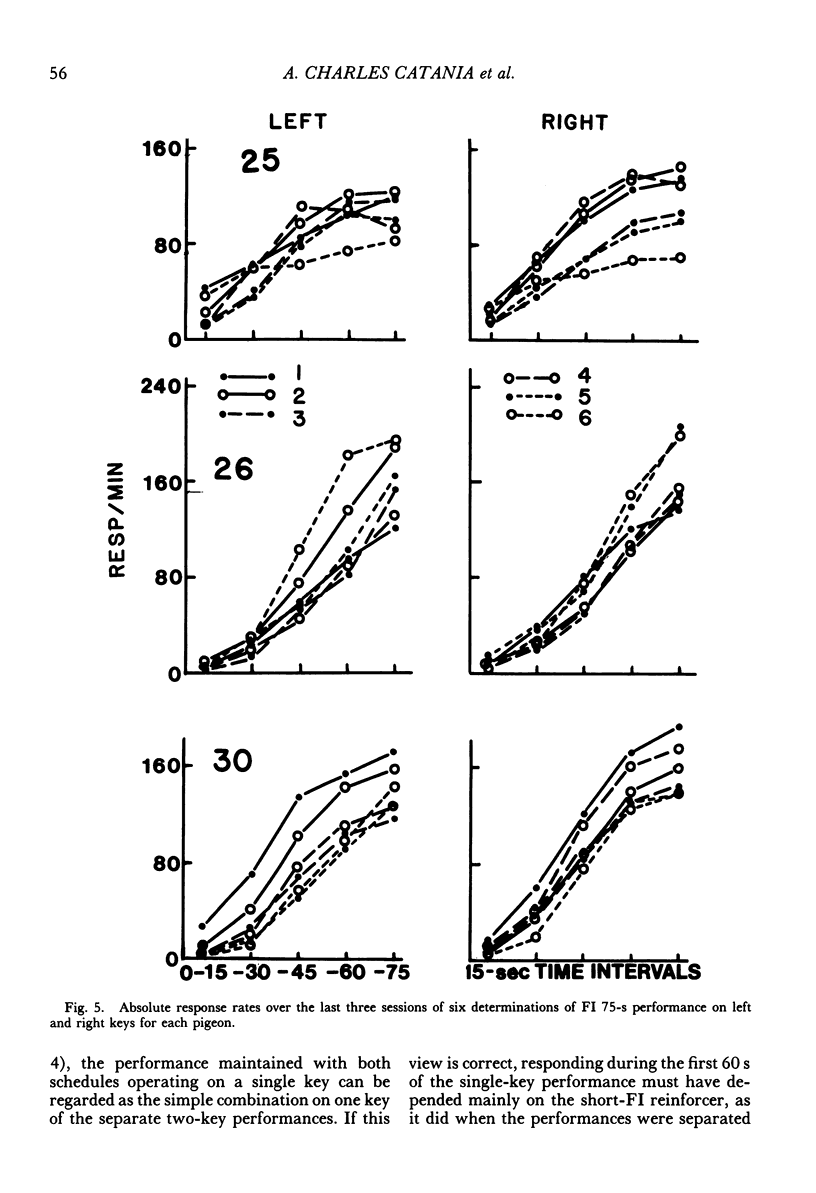

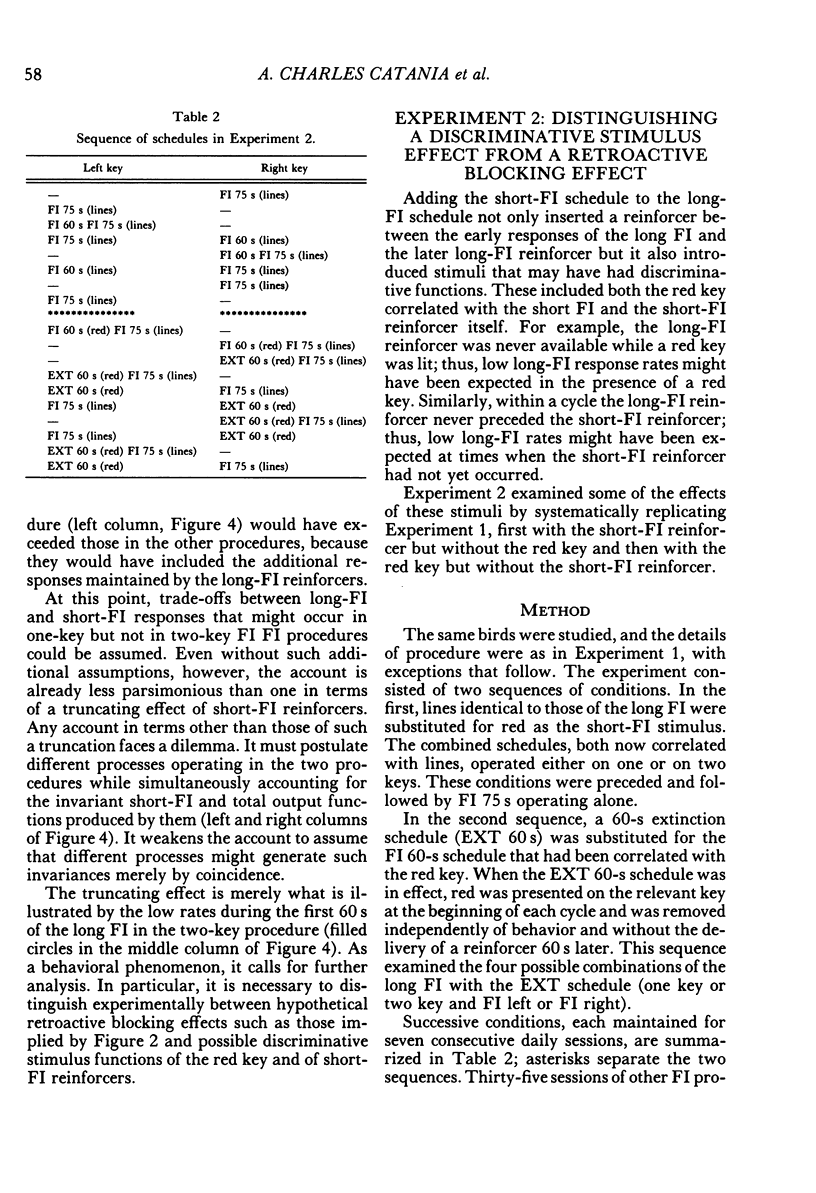
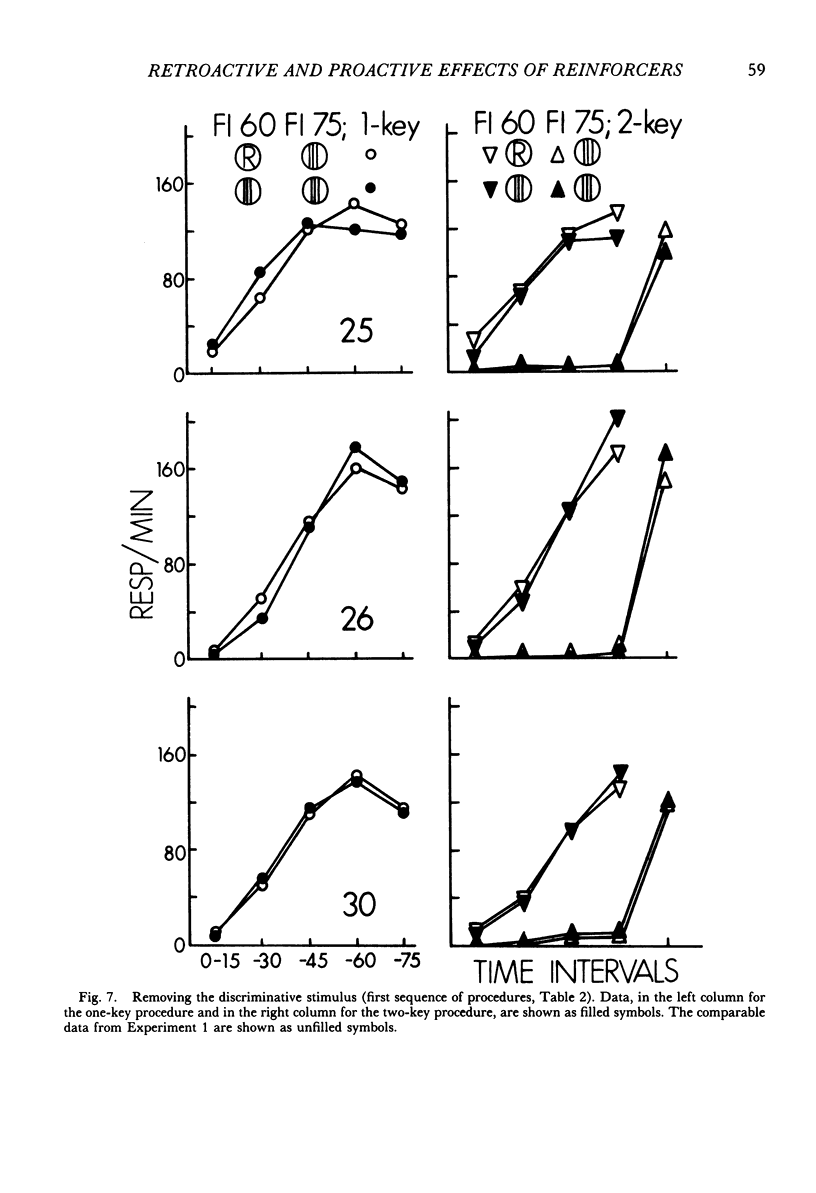
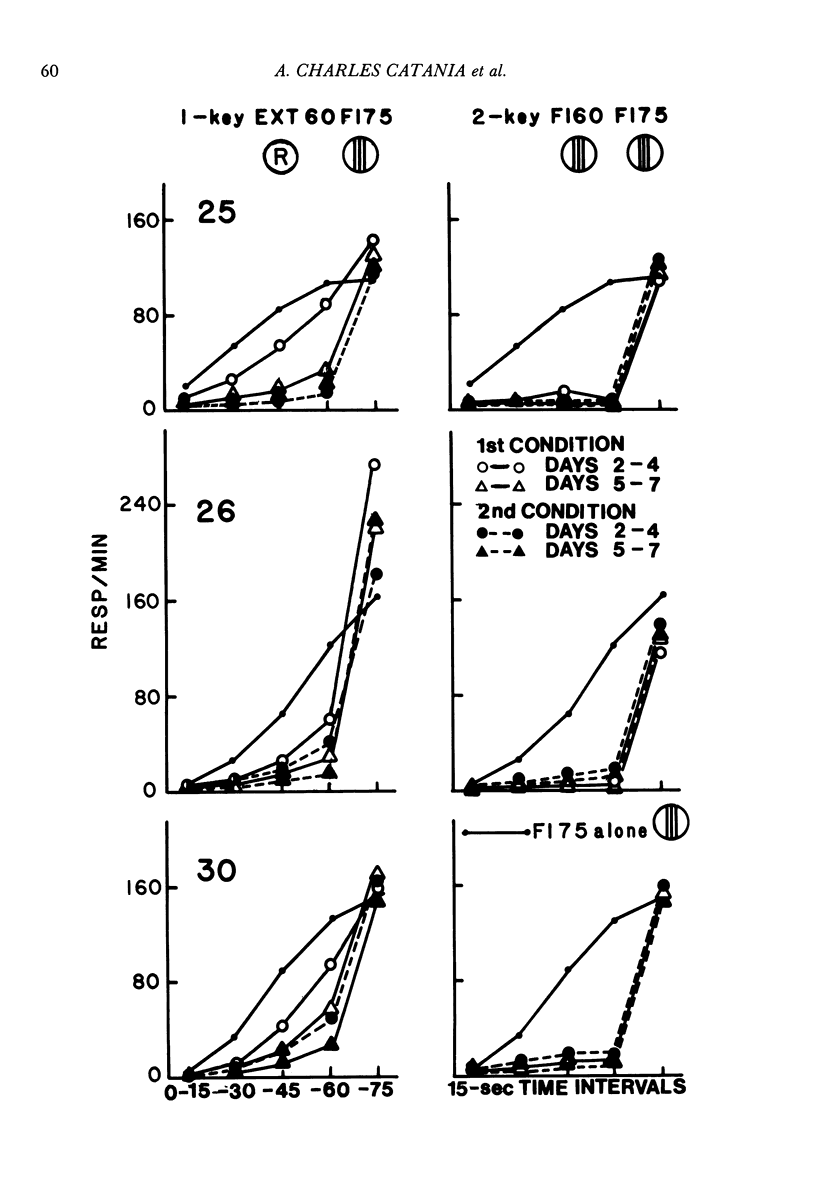


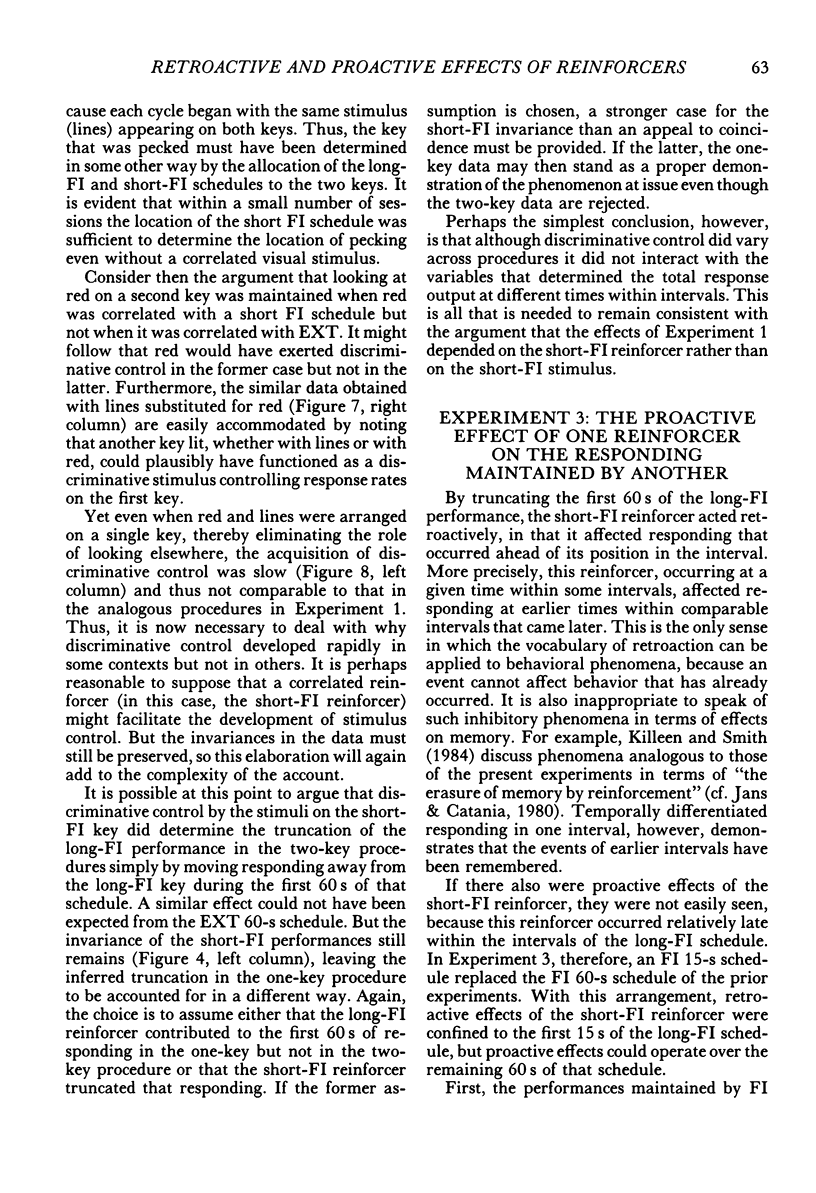

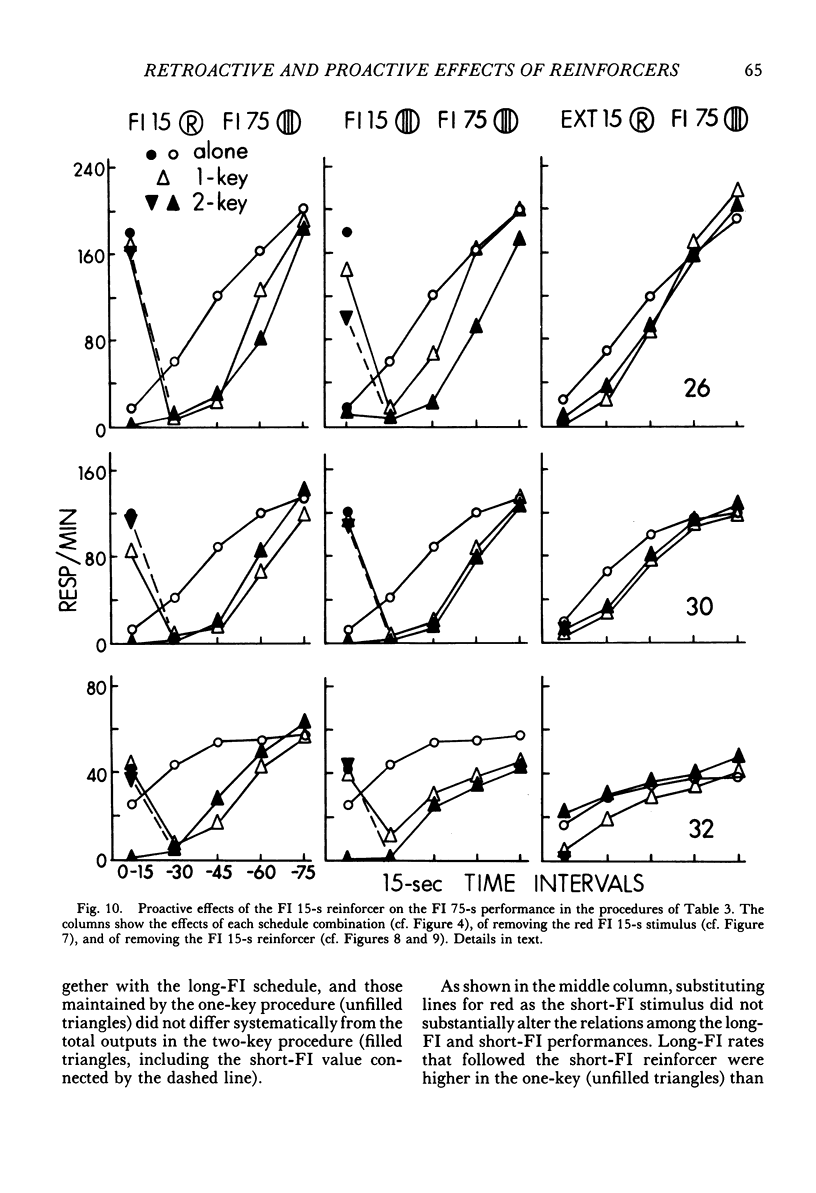
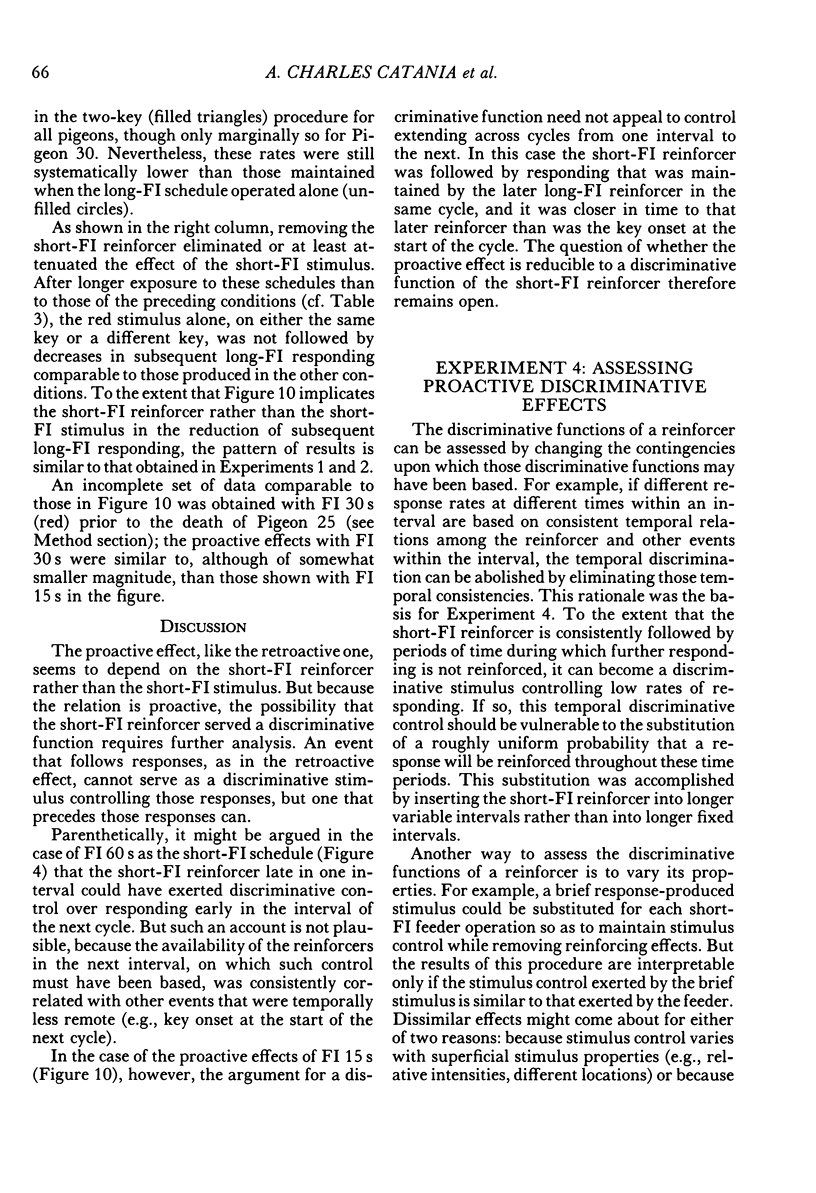
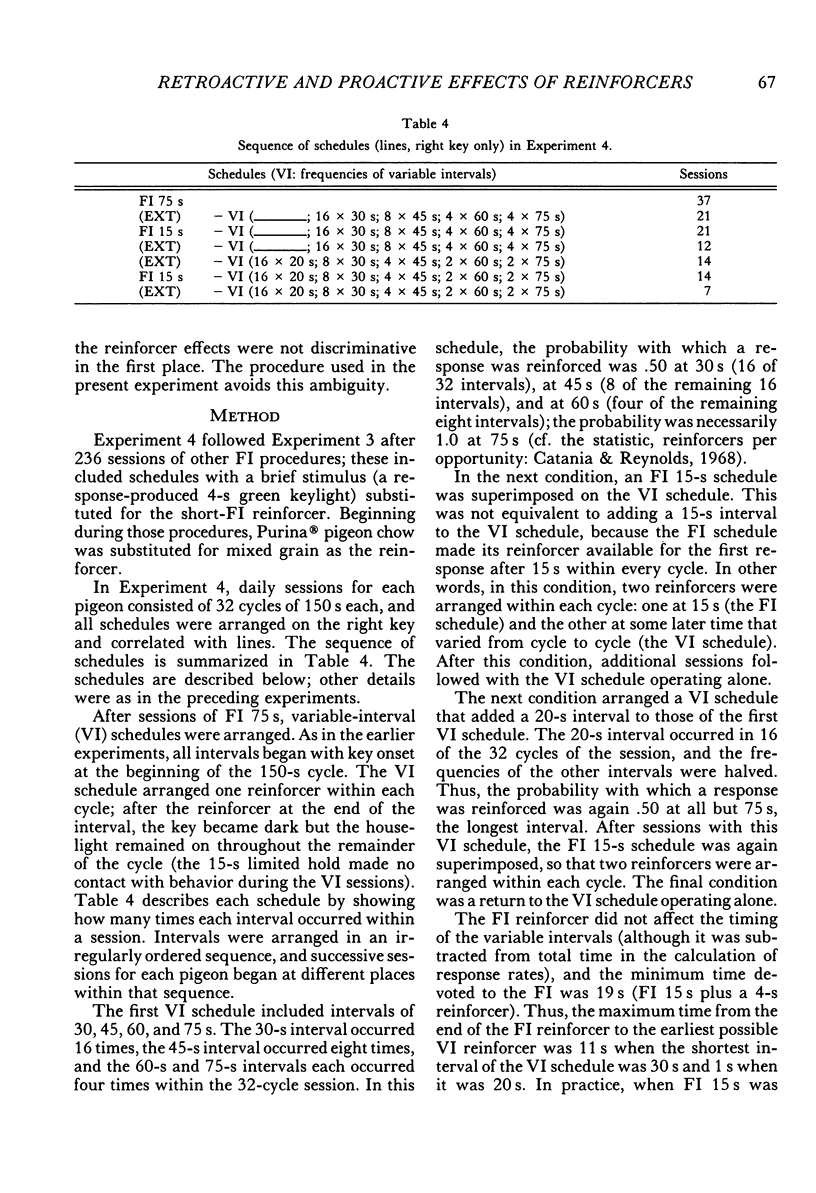

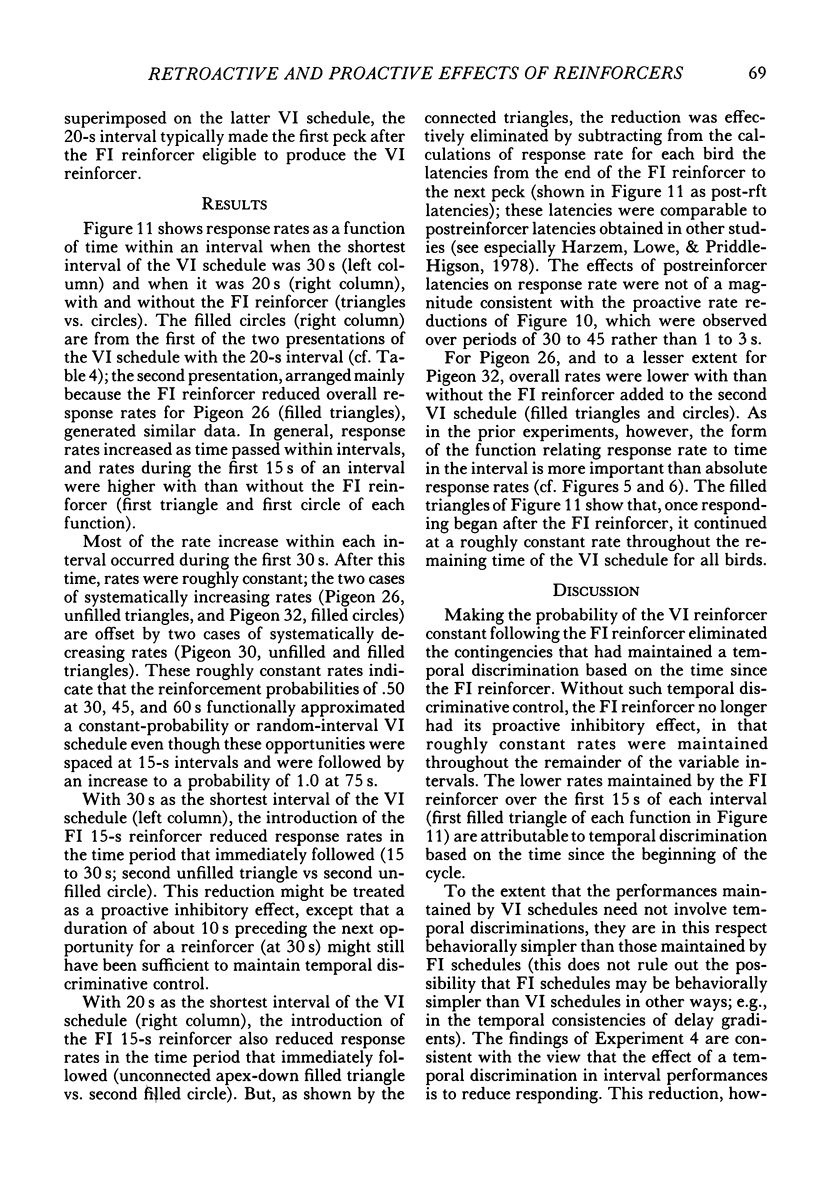
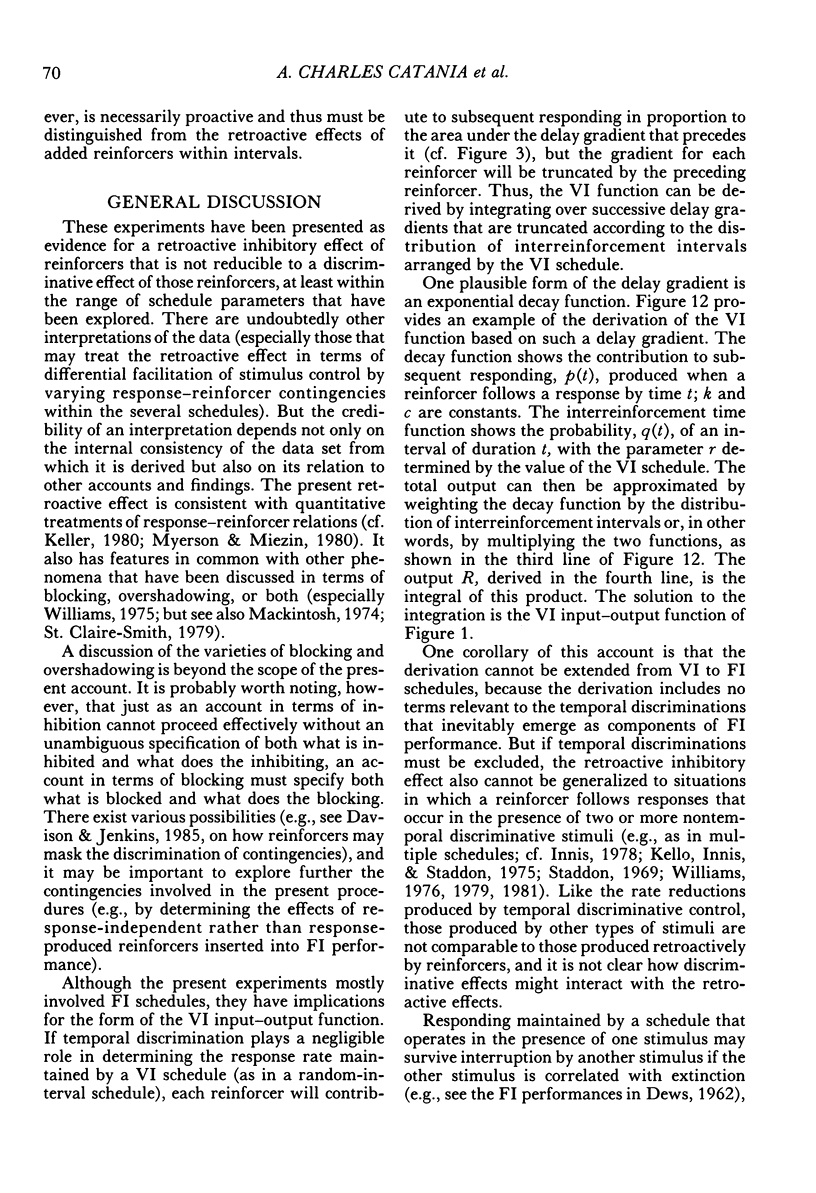
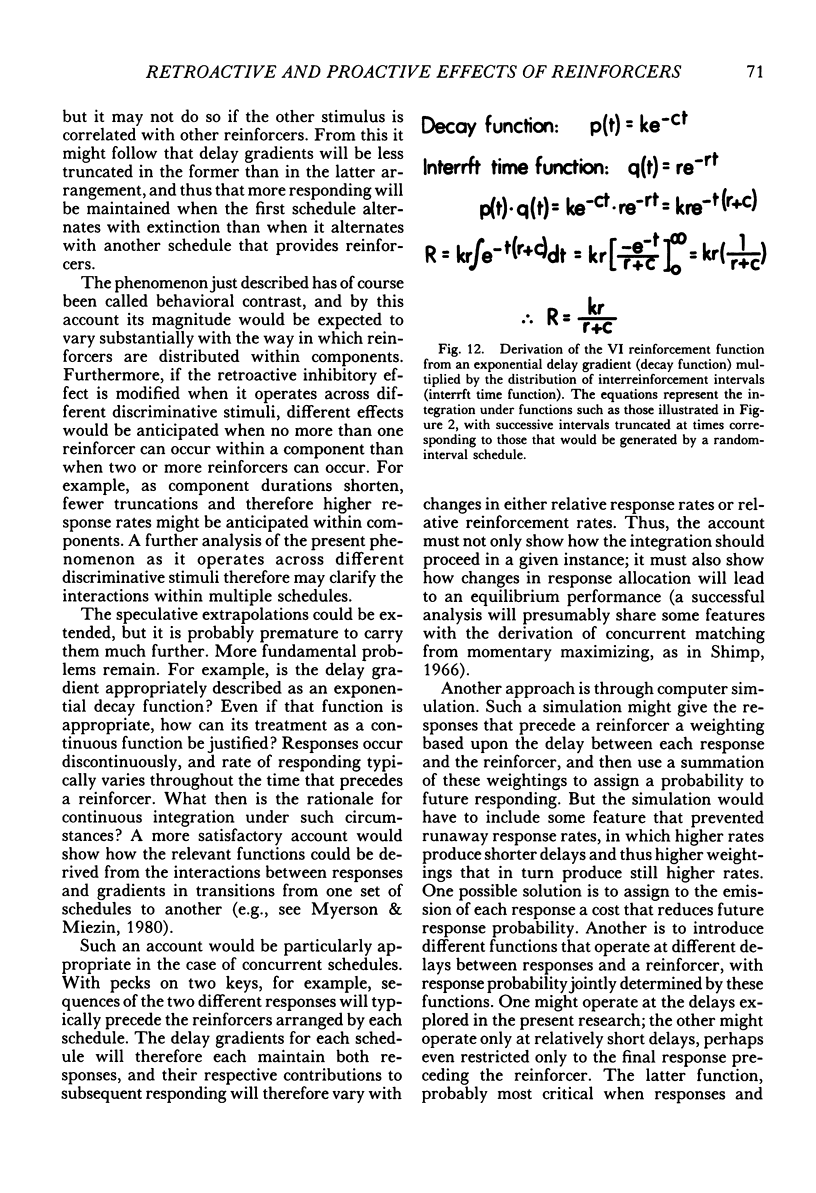


Selected References
These references are in PubMed. This may not be the complete list of references from this article.
- Brown P. L., Jenkins H. M. Conditioned inhibition and excitation in operant discrimination learning. J Exp Psychol. 1967 Oct;75(2):255–266. doi: 10.1037/h0024985. [DOI] [PubMed] [Google Scholar]
- Catania A. C. Concurrent performances: inhibition of one response by reinforcement of another. J Exp Anal Behav. 1969 Sep;12(5):731–744. doi: 10.1901/jeab.1969.12-731. [DOI] [PMC free article] [PubMed] [Google Scholar]
- Catania A. C. Reinforcement schedules: the role of responses preceding the one that produces the reinforcer. J Exp Anal Behav. 1971 May;15(3):271–287. doi: 10.1901/jeab.1971.15-271. [DOI] [PMC free article] [PubMed] [Google Scholar]
- Catania A. C., Reynolds G. S. A quantitative analysis of the responding maintained by interval schedules of reinforcement. J Exp Anal Behav. 1968 May;11(3 Suppl):327–383. doi: 10.1901/jeab.1968.11-s327. [DOI] [PMC free article] [PubMed] [Google Scholar]
- Catania A. C. Self-inhibiting effects of reinforcement. J Exp Anal Behav. 1973 May;19(3):517–526. doi: 10.1901/jeab.1973.19-517. [DOI] [PMC free article] [PubMed] [Google Scholar]
- DEWS P. B. The effect of multiple S delta periods on responding on a fixed-interval schedule. J Exp Anal Behav. 1962 Jul;5:369–374. doi: 10.1901/jeab.1962.5-369. [DOI] [PMC free article] [PubMed] [Google Scholar]
- Farmer J., Schoenfeld W. N. Varying temporal placement of an added stimulus in a fixed-interval schedule. J Exp Anal Behav. 1966 Jul;9(4):369–375. doi: 10.1901/jeab.1966.9-369. [DOI] [PMC free article] [PubMed] [Google Scholar]
- Harzem P., Lowe C. F., Priddle-Higson P. J. Inhibiting function of reinforcement: magnitude effects on variable-interval schedules. J Exp Anal Behav. 1978 Jul;30(1):1–10. doi: 10.1901/jeab.1978.30-1. [DOI] [PMC free article] [PubMed] [Google Scholar]
- Hearst E., Besley S., Farthing G. W. Inhibition and the stimulus control of operant behavior. J Exp Anal Behav. 1970 Nov;14(3 Pt 2 Suppl):373–409. doi: 10.1901/jeab.1970.14-s373. [DOI] [PMC free article] [PubMed] [Google Scholar]
- Herrnstein R. J. On the law of effect. J Exp Anal Behav. 1970 Mar;13(2):243–266. doi: 10.1901/jeab.1970.13-243. [DOI] [PMC free article] [PubMed] [Google Scholar]
- Innis N. K. Contrast effects in multiple fixed-interval reinforcement schedules. J Exp Anal Behav. 1978 Mar;29(2):233–242. doi: 10.1901/jeab.1978.29-233. [DOI] [PMC free article] [PubMed] [Google Scholar]
- Jans J. E., Catania A. C. Short-term remembering of discriminative stimuli in pigeons. J Exp Anal Behav. 1980 Sep;34(2):177–183. doi: 10.1901/jeab.1980.34-177. [DOI] [PMC free article] [PubMed] [Google Scholar]
- Kello J. E., Innis N. K., Staddon J. E. Eccentric stimuli on multiple fixed-interval schedules. J Exp Anal Behav. 1975 Mar;23(2):233–240. doi: 10.1901/jeab.1975.23-233. [DOI] [PMC free article] [PubMed] [Google Scholar]
- Rachlin H., Baum W. M. Effects of alternative reinforcement: does the source matter? J Exp Anal Behav. 1972 Sep;18(2):231–241. doi: 10.1901/jeab.1972.18-231. [DOI] [PMC free article] [PubMed] [Google Scholar]
- Shimp C. P. Probabilistically reinforced choice behavior in pigeons. J Exp Anal Behav. 1966 Jul;9(4):443–455. doi: 10.1901/jeab.1966.9-443. [DOI] [PMC free article] [PubMed] [Google Scholar]
- Staddon J. E. Multiple fixed-interval schedules: transient contrast and temporal inhibition. J Exp Anal Behav. 1969 Jul;12(4):583–590. doi: 10.1901/jeab.1969.12-583. [DOI] [PMC free article] [PubMed] [Google Scholar]
- Williams B. A. Behavioral contrast as a function of the temporal location of reinforcement. J Exp Anal Behav. 1976 Jul;26(1):57–64. doi: 10.1901/jeab.1976.26-57. [DOI] [PMC free article] [PubMed] [Google Scholar]
- Williams B. A. Contrast, component duration, and the following schedule of reinforcement. J Exp Psychol Anim Behav Process. 1979 Oct;5(4):379–396. doi: 10.1037//0097-7403.5.4.379. [DOI] [PubMed] [Google Scholar]
- Williams B. A. The blocking of reinforcement control. J Exp Anal Behav. 1975 Sep;24(2):215–225. doi: 10.1901/jeab.1975.24-215. [DOI] [PMC free article] [PubMed] [Google Scholar]
- Williams B. A. The following schedule of reinforcement as a fundamental determinant of steady state contrast in multiple schedules. J Exp Anal Behav. 1981 May;35(3):293–310. doi: 10.1901/jeab.1981.35-293. [DOI] [PMC free article] [PubMed] [Google Scholar]


